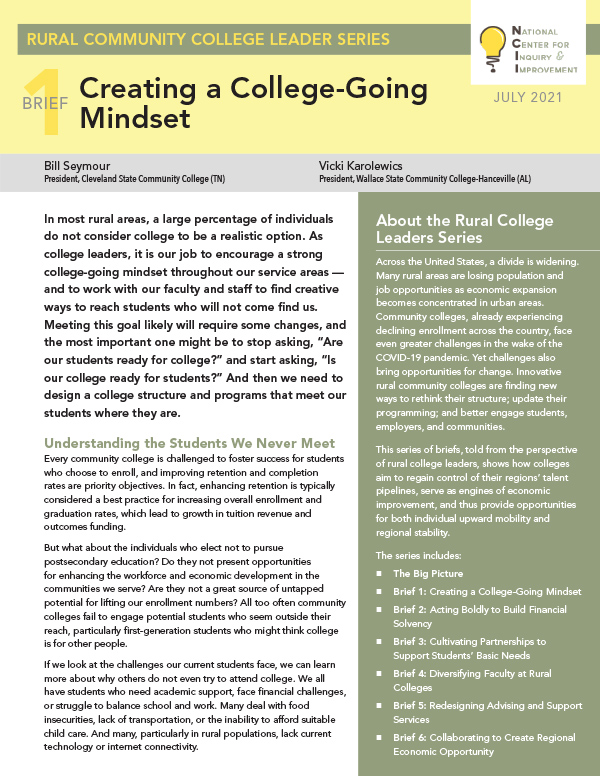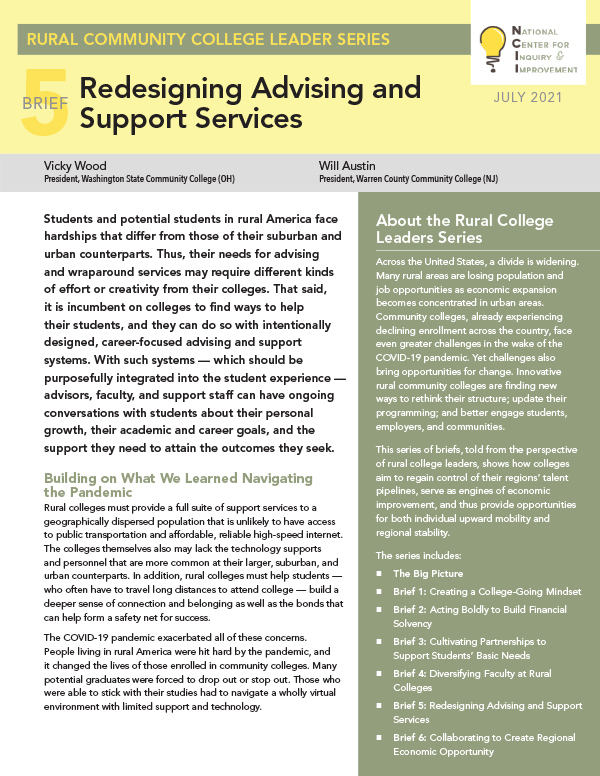Today’s challenges call for significant action — and for bold regional leadership — from rural community college leaders. The Big Picture provides context for all of the briefs in this series.
Brief 1: Creating a College-Going Mindset
In most rural areas, a large percentage of individuals do not consider college to be a realistic option. To encourage a strong college-going mindset, colleges must design structures and programs that meet students where they are. To do so, colleges should stop asking, “Are our students ready for college?” and start asking, “Is our college ready for students?”
Brief 2: Acting Boldly to Build Financial Solvency
While the COVID-19 pandemic has had a devastating impact on rural community colleges, leaders at most institutions have long been aware that their business model is unsustainable. Stimulus funds are helping in the short term, and college leaders should use these critical investments not just to manage the present but also to plan for the future.
Brief 3: Cultivating Partnerships to Support Students’ Basic Needs
People living in rural America face a range of challenges that discourage beginning college and make dropping out more likely. Fortunately, rural communities also have deep, interwoven social networks that bond people to one another and to place. Community colleges are uniquely positioned to tap into these networks and build a fabric of holistic supports for their students.
Brief 4: Diversifying Faculty at Rural Colleges
On a diverse campus, everyone benefits from having varying perspectives. Despite the need, many rural colleges face challenges in attracting and retaining faculty of color. Forward-thinking colleges are addressing this issue with honest conversations and purposeful solutions designed to narrow the discrepancy in the racial/ethnic make-up of faculty in comparison to their student populations.
Brief 5: Redesigning Advising and Support Services
Students and potential students in rural America face hardships that differ from those of their suburban and urban counterparts. Thus, their needs for advising and wraparound services may require different kinds of effort or creativity from their colleges. It is incumbent on colleges to find ways to help their students, and they can do so with intentionally designed, career-focused advising and support systems.
Brief 6: Collaborating to Create Regional Economic Opportunity
Partnerships between community colleges and K–12, higher education, and employers are the key to improving economic mobility for our students. Every community college should be the engine of economic opportunity in its region, but colleges cannot do this work alone. Community college leaders must play a more active role in bringing stakeholders together with the explicit goal of improving economic mobility.







